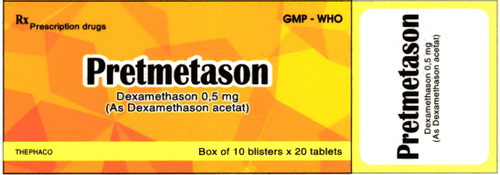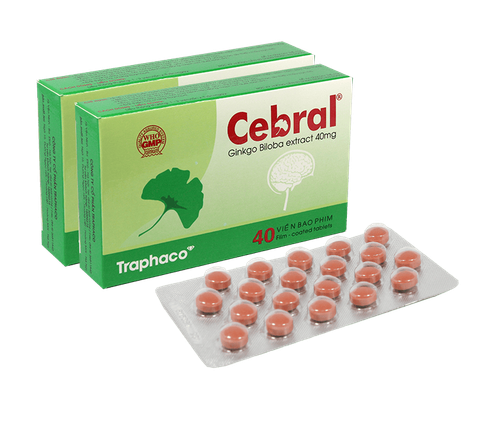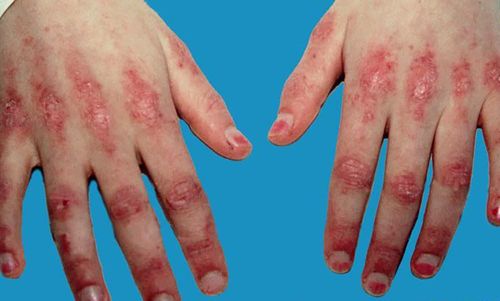This is an automatically translated article.
Dermatomyositis is a systemic autoimmune disease that causes inflammation of the muscles or related tissues, such as the skin or the blood vessels that supply the muscles. The disease causes inflammatory reactions, cell damage, loss of motor function and many other dangerous complications if not detected and controlled properly in the first place.1. What is dermatomyositis?
Dermatomyositis is a systemic autoimmune disease.
In which, dermatomyositis will manifest with inflammatory reactions in the muscles, causing muscle weakness and accompanied by red-purple rashes on the skin, especially.
Dermatomyositis can affect adults and children. In adults, dermatomyositis usually occurs between the ages of 40 and early 60. In children, it usually occurs between the ages of 5 and 15. At the same time, the disease tends to affect women at a higher rate than men.
The cause of dermatomyositis is still not well understood. Some hypothesize that this disease has the same mechanism as systemic autoimmune diseases. In it, the immune system thinks it is an antigen and will mistakenly attack body tissues. In dermatomyositis, the small blood vessels in muscle tissue are affected. Inflammatory cells attack the endothelium surrounding blood vessels and eventually lead to muscle fiber destruction.
Because the cause is unknown, there is no specific treatment for dermatomyositis. However, what are currently available can help patients improve symptoms, reduce skin rashes, and regain muscle strength and function.
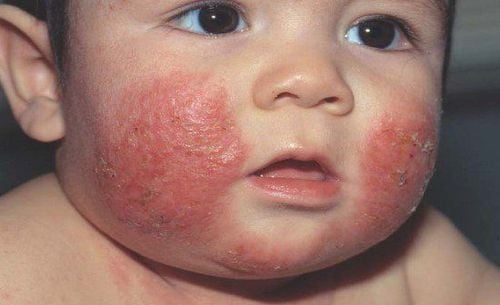
Bệnh viêm da cơ xảy ra phổ biến ở trẻ em
2. How does dermatomyositis manifest?
The most common signs and symptoms of dermatomyositis include the following:
Skin lesions: A red-purple skin rash or patches of dark skin is the first sign to suspect the diagnosis of inflammation. muscle skin. The most common rash site is on the face and eyelids, on the knuckles, elbows, knees, chest, and back. In addition to the appearance of red, purple rashes on the skin, skin lesions can also cause itching and pain. Muscle weakness: Progressive muscle weakness in the large muscles of the proximal extremities, such as those in the hips, thighs, shoulders, arms, and neck. The muscles are often uniformly weak on both the left and right sides of the body; at the same time, there will be a tendency to gradually worsen.
3. How is dermatomyositis diagnosed?
In addition to the above symptoms, when the doctor suspects dermatomyositis, the following tests will be ordered to confirm the diagnosis:
Blood tests: Blood tests will show elevated levels of muscle enzymes. such as creatine kinase (CK) and aldolase. At the same time, autoimmune antibodies are also quantified to look for evidence for autoimmune disorders as well as help determine the most appropriate drug and treatment for each patient. Chest X-ray: An x-ray that helps check for signs of lung damage that results from dermatomyositis. Electromyography: By inserting thin needle electrodes through the skin into the muscle, the electrical activity of the muscle is measured when the patient relaxes or contracts the muscle. From there, changes in electrical activity patterns can confirm myopathy and which muscle groups are affected. Magnetic resonance imaging (MRI): A scanner that produces cross-sectional images of muscle bundles generated by a strong magnetic field and radio waves allows the assessment of inflammation with a very large muscle mass. Skin or muscle biopsy: A small piece of skin or muscle will be collected and analyzed to help confirm the diagnosis of dermatomyositis. Microscopic examination of the specimen shows inflammation in the muscle or from other problems such as injury or infection.
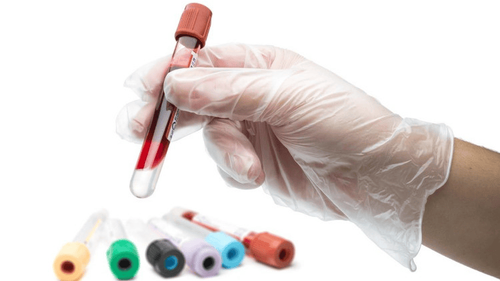
Xét nghiệm máu là 1 trong những phương pháp chẩn đoán bệnh
4. Can dermatomyositis be treated?
To date, specific treatment modalities for dermatomyositis have not been completed. However, currently available treatments can still improve skin lesions and muscle strength and function.
In general, the sooner treatment is started, the less skin and muscle damage is done and the faster the patient's quality of life recovers. Medications currently used to treat dermatomyositis include:
Corticosteroids: Drugs such as prednisone can control the symptoms of dermatomyositis quickly. However, prolonged use always has the potential for serious side effects. Therefore, a high dose of corticosteroids is initially used to control symptoms. Thereafter, the dose should be rapidly tapered off once symptoms have improved. Non-Corticosteroid Anti-Inflammatory Drugs: When used with a corticosteroid, these drugs can help reduce the dose and side effects of corticosteroids. The two most common medications for dermatomyositis are azathioprine (Azasan, Imuran) and methotrexate (Trexall). Rituximab (Rituxan): Although more commonly used to treat rheumatoid arthritis, rituximab is an option if initial therapies do not adequately control the symptoms of dermatomyositis. Antimalarials: For a persistent rash, your doctor may prescribe an antimalarial, such as hydroxychloroquine (Plaquenil) to improve skin lesions in dermatomyositis. Sunscreen: Patients need to know how to protect their skin from the sun by applying sunscreen and wearing protective clothing and hats to control skin rashes in dermatomyositis.

Kem chống nắng giúp bảo vệ da khỏi ánh nắng mặt trời
Depending on the severity of your symptoms, your doctor may recommend the following additional treatments:
Intravenous immunoglobulin: This is a suspension containing antibodies prepared from a blood donor. These antibodies can neutralize and block the damaging antibodies that attack the muscles and skin in dermatomyositis. Therapy with this modality is quite expensive and may need to be repeated frequently to maintain continuity of effect. Surgery: Surgery may be an option to remove painful calcium deposits, loss of muscle function, and prevent skin infections from recurring. Physical therapy: Exercises to help maintain and improve the strength and flexibility of muscle groups. Speech therapy: If the muscles of the pharynx are affected, speech therapy can help the person learn how to improve and correct these impairments. Adjust nutrition: Because chewing and swallowing in people with dermatomyositis may become more difficult, the diet needs to be adjusted, which is both high in energy but soft, smooth, and easy to swallow.

Phẫu thuật có thể được áp dụng cho bệnh viêm da cơ
5. Is dermatomyositis dangerous?
If not detected early and treated promptly, dermatomyositis can lead to dangerous complications as follows:
Difficulty swallowing: If the muscles in the esophagus are affected, the patient may have problems on swallowing, causing poor appetite, weight loss and malnutrition. Pneumonia: It is dysphagia that reduces the cough reflex, making it easy for the patient to aspirate food while eating. Even saliva secreted in the oral cavity or refluxed from the stomach is often aspirated into the lungs and leads to pneumonia. Shortness of breath: When the respiratory muscles are also weakened, such as the pharynx, the muscles in the chest wall, the patient will have difficulty breathing and sometimes have to depend on the ventilator. Calcium deposition: After being damaged by inflammatory reactions, the connective tissue becomes deposited in calcium plaques, which causes loss of muscle function and is evident as the disease progresses. This finding is more common in children with dermatomyositis and develops earlier in the course of the disease. Comorbidities: Dermatomyositis can be a predisposing factor for other conditions. It is these conditions that further damage the patient's health, including: Raynaud's syndrome: This is a condition that causes peripheral blood vessel constriction, causing your fingers, toes, cheeks, nose, and ears to become swollen. pale, bruised when exposed to cold temperatures or when nervous, stressed. Other autoimmune connective tissue diseases, such as lupus, rheumatoid arthritis, multiple sclerosis, and Sjogren's syndrome, can occur with dermatomyositis as overlap syndrome. Cardiovascular disease: Dermatomyositis can cause myocarditis, which in turn progresses to congestive heart failure and arrhythmias. Pulmonary disease: Interstitial lung disease can occur with dermatomyositis, causing scarring of the lung tissue, reducing its elasticity and, in severe cases, respiratory failure. Cancer: Dermatomyositis in adults is associated with an increased risk of developing cancer, especially in the cervix, lung, pancreas, breast, ovaries, and gastrointestinal tract.
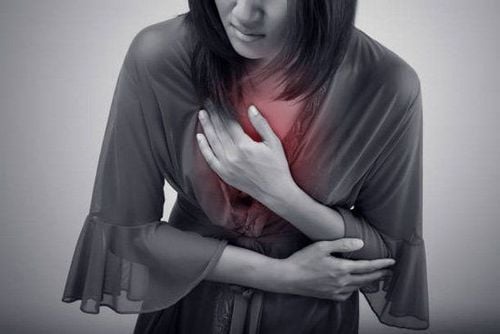
Bệnh viêm da cơ có thể gây khó thở cho người bệnh
In summary, dermatomyositis is a disease belonging to the group of systemic autoimmune diseases. In particular, the disease is characterized by the appearance of purple red rashes on the skin and an inflammatory response that causes muscle weakness. When there are any suspicious signs as above, it is necessary to visit early to get the right treatment, slow down the progression of the disease and maintain organ function.
For detailed advice, please come directly to Vinmec health system or register online HERE.






